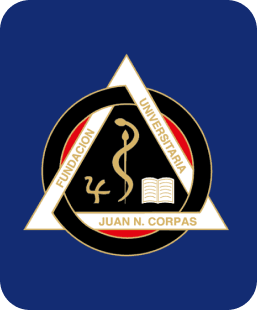Fractura de tillaux chaput en paciente adulto. Reporte de Caso.
Autor corporativo
Recolector de datos
Otros/Desconocido
Director audiovisual
Editor/Compilador
Editores
Tipo de Material
Fecha
Título de serie/ reporte/ volumen/ colección
Es Parte de
Resumen en español
Introducción. La fractura de Tillaux Chaput es una fractura producida en el borde lateral de la tibia distal la cual suele afectar normalmente las fisis, las cuales son una estructura cartilaginosa, razón por la cual representa una zona susceptible del hueso para sufrir una fractura, sin embargo en la población adulta, el ligamento cede en lugar de involucionar a el fragmento tibial de su unión epifisiaria, por lo que resulta rara presentación aislada en adultos encontrándose menos de una decena de casos descritos en pacientes mayores de 18 años en la literatura. En este reporte de caso, siguiendo las recomendaciones de las guías para reporte de casos (Case Report Guidelines) CARE se presenta el caso de una mujer de (cuarenta y dos) 42 años de edad, previamente sana que posterior a sufrir una caída desde su propia altura presenta dolor, eritema y edema en miembro inferior derecho, a region de la zona maleolar; por lo que decide realizar masajes terapéuticos extra hospitalarios. Debido a la persistencia del dolor, imposibilidad para continuar realizando sus actividades cotidianas, y dificultad a la marcha acude al servicio de urgencias, donde luego de realizar abordaje clínico e imagenológico (a través de radiografía simple de tobillo y tomografía computada) por parte del servicio de urgencias generales, medicina familiar y ortopedia y traumatología se diagnostica una fractura compleja, la es manejada por el servicio de ortopedia y traumatología institucional, quienes deciden intervenir quirúrgicamente a la paciente con un abordaje para realización de una reducción abierta y fijación interna con el objetivo de restablecer la anatomía habitual y la congruencia articular tibioastragalina. Podemos concluir que, a pesar de los pocos casos descritos en la literatura de este tipo de fractura en la población adulta, es un diagnóstico diferencial que se debe tener en cuenta en el momento del abordaje inicial del paciente fracturado, y que por lo tanto resulta de gran interés clínico poder identificar, diagnosticar y abordar de manera correcta para poder identificar si la fractura es susceptible o no a intervención quirúrgica de acuerdo a sus características y brindar una atención optima y favorable al paciente quien sufre de esta lesión.
Resumen en inglés
Introduction: The Tillaux Chaput fracture is a fracture produced on the lateral edge of the distal tibia which usually affects the physes, which are a cartilaginous structure, which is why it represents a susceptible area of the bone to suffer a fracture, however In the adult population, the ligament yields instead of involuting the tibial fragment of its epiphyseal union, which is why it is a rare isolated presentation in adults, with less than a dozen cases described in patients over 18 years of age in the literature. In this case report, following the recommendations of the CARE Case Report Guidelines, we present the case of a (forty-two) 42-year-old woman, previously healthy, who after suffering a fall from her own height presents pain, erythema and edema in the lower right limb, in the region of the malleolar area; so she decides to perform extra-hospital therapeutic massages. Due to the persistence of pain, the impossibility to continue carrying out his daily activities, and difficulty in walking, he went to the emergency department, where after performing a clinical and imaging approach (through simple ankle X-ray and computed tomography) by the service. of general emergencies, family medicine and orthopedics and traumatology a complex fracture is diagnosed, it is managed by the institutional orthopedics and traumatology service, who decide to intervene surgically on the patient with an approach to perform an open reduction and internal fixation with the objective of restore normal anatomy and tibiotalar joint congruence. We can conclude that, despite the few cases described in the literature of this type of fracture in the adult population, it is a differential diagnosis that must be taken into account at the time of the initial approach to the fractured patient, and therefore it is It is of great clinical interest to be able to identify, discover and address correctly in order to identify whether or not the fracture is susceptible to surgical intervention according to its characteristics and provide optimal and favorable care to the patient suffering from this injury.
Descripción general
Notas
URL del Recurso
Identificador ISBN
Identificador ISSN
Identificador DOI
Página de inicio
Es Parte del Libro
Colecciones





